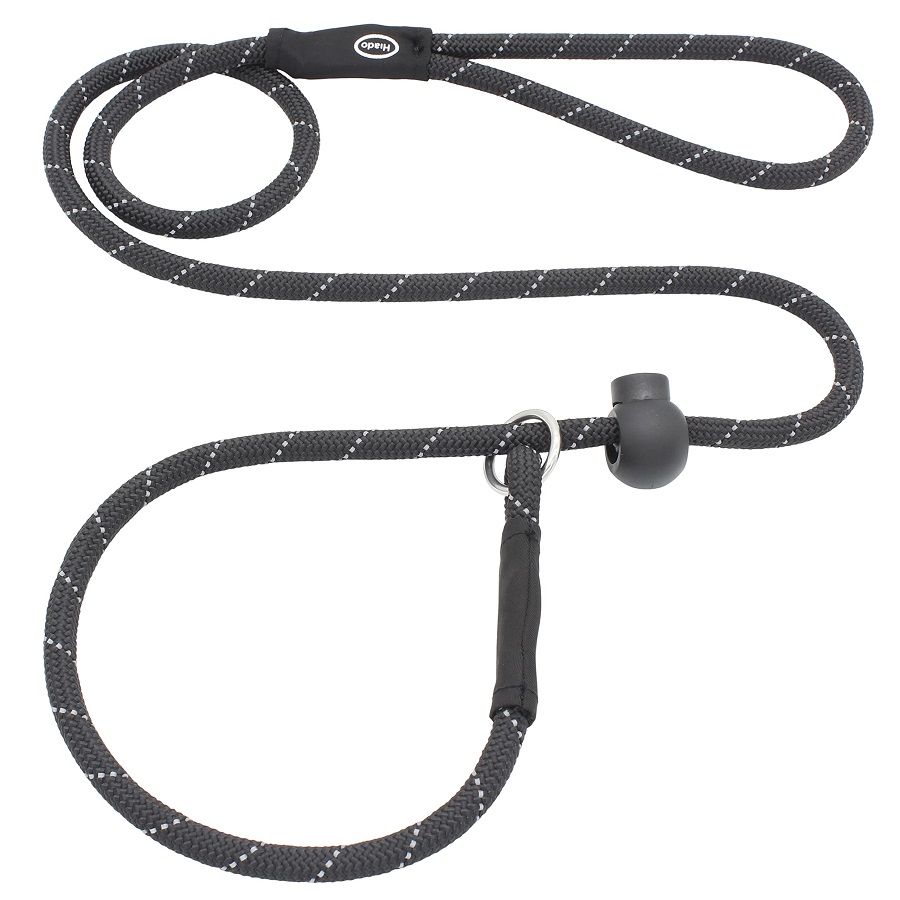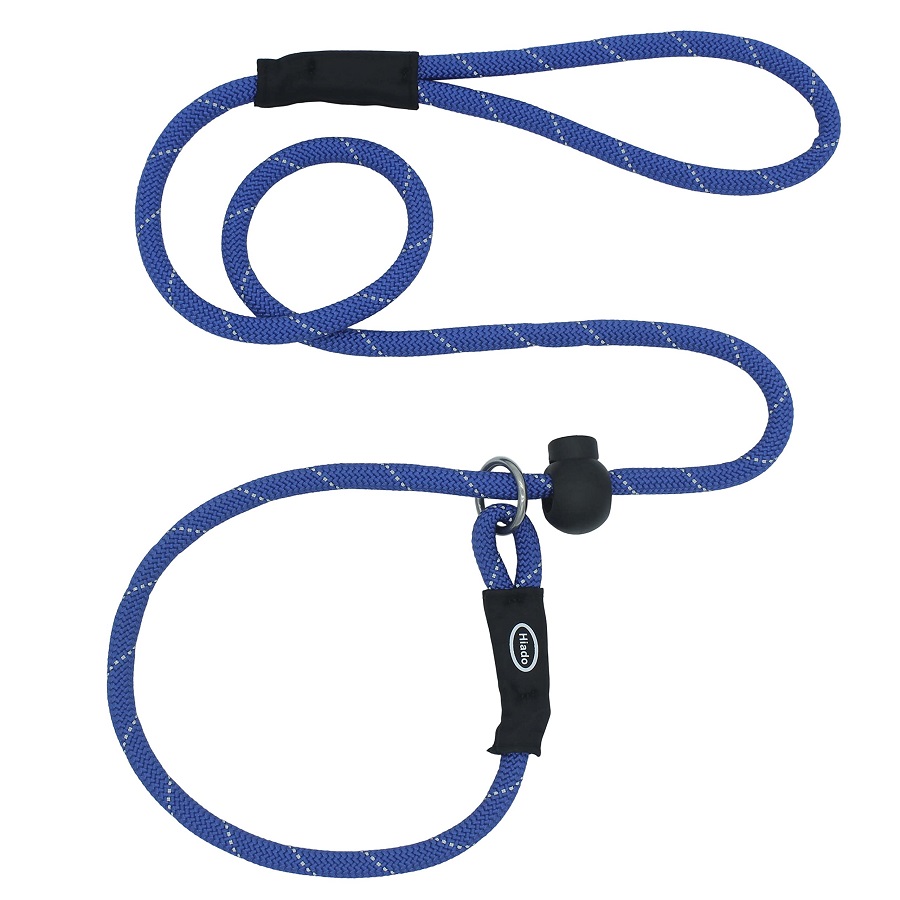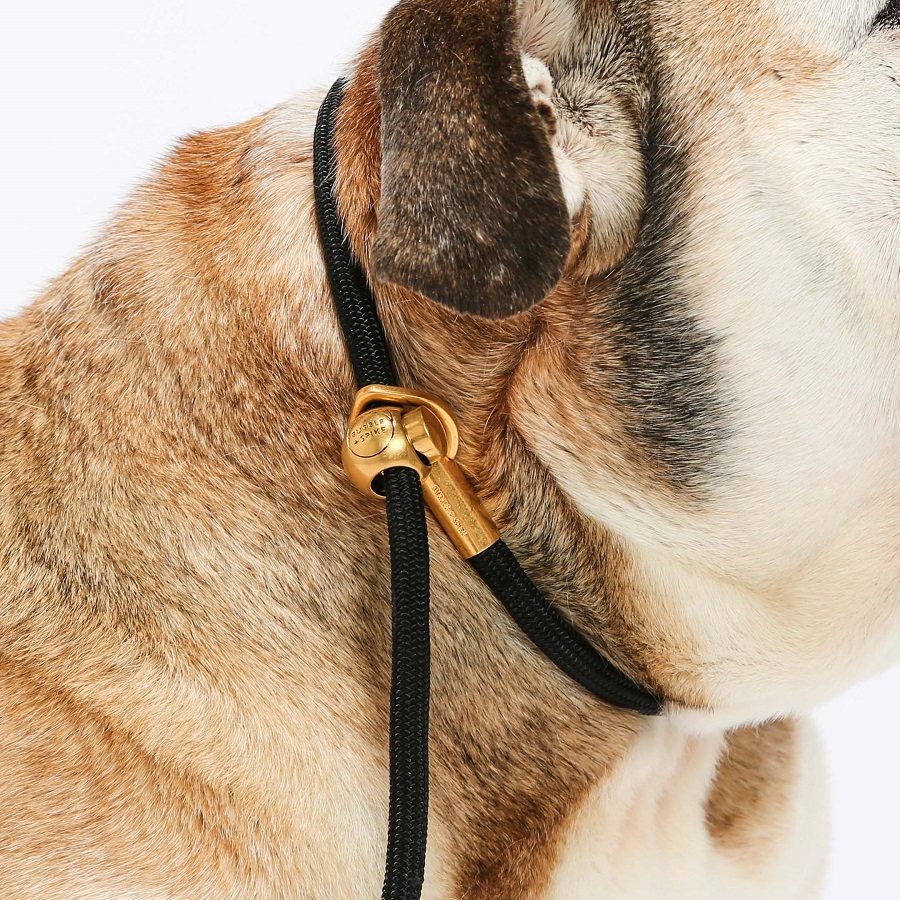Introduction: Understanding Slip Leashes for Dogs
Slip leashes are a popular tool among dog owners, trainers, and handlers, offering a versatile and simple solution for managing dogs during walks, training, or events. Unlike traditional collars or harnesses, slip leashes are designed to tighten when tension is applied, ensuring a secure fit without the need for constant adjustments. These leashes come in various materials such as nylon, leather, and chain, making them suitable for different dog breeds, sizes, and training purposes. This article will explore the pros and cons of slip leashes, discuss their proper use, and provide safety guidelines to ensure both you and your dog benefit from this training tool.
What is a Slip Leash?
A slip leash, also known as a slip lead, is a looped leash with a sliding mechanism that allows the leash to tighten around the dog’s neck as pressure is applied. This means it can act as both a collar and a leash in one, eliminating the need for separate gear. The design typically consists of a simple rope or chain, with a loop at one end to attach to the dog’s neck and a handle at the other end for the handler. Slip leashes are most commonly used in training environments, veterinary clinics, shelters, and situations where quick adjustments are necessary.
The key feature of a slip leash is its adjustable loop, which tightens when the dog pulls or when pressure is applied. While this can be useful in certain training scenarios, it also requires proper handling to ensure it doesn’t cause harm to the dog.

Pros of Using a Slip Leash for Dogs
Slip leashes offer several advantages, especially for dog owners or trainers looking for simplicity and efficiency. Let’s take a closer look at the key benefits of using a slip leash.
1. Easy to Use and Adjustable
One of the main advantages of a slip leash is its simplicity. With no complicated buckles or fasteners, it’s easy to put on and adjust. The loop can be quickly resized to fit a dog’s neck, ensuring it remains snug without being overly tight. For handlers with multiple dogs or those working in a fast-paced environment like a shelter or training center, slip leashes are ideal because they can be adjusted quickly and efficiently.
2. Effective in Training
Slip leashes are often used in training sessions due to their ability to provide immediate feedback to the dog. When a dog pulls or behaves undesirably, the slip leash tightens around the neck, creating a natural deterrent that encourages the dog to stop pulling. This makes it an excellent tool for teaching dogs basic commands such as “heel” or “sit,” as well as for correcting undesirable behaviors. Trainers often rely on slip leashes to deliver clear, consistent corrections in a way that’s easier for dogs to understand compared to other types of leashes.
3. Compact and Lightweight
Slip leashes are typically lightweight and compact, making them a great option for travel or outdoor activities. Whether you’re going for a walk in the park or taking your dog on a trip, a slip leash is easy to pack and doesn’t add bulk or weight to your gear. Its compact design also makes it less likely to get tangled, which is a common issue with traditional leashes that have clips and clasps.
4. Great for Short-Term Use
Due to their adjustable nature, slip leashes are often preferred for short-term use, such as in veterinary clinics, grooming appointments, or when managing dogs at events. They offer a fast and secure solution when you need to ensure the dog remains under control without the need for additional equipment.
Cons of Using a Slip Leash for Dogs
While slip leashes offer several benefits, they are not without their drawbacks. It’s important to consider the disadvantages before deciding whether they are the right tool for your dog.
1. Can Cause Injury If Misused
One of the most significant risks associated with slip leashes is the potential for injury. Because the leash tightens when tension is applied, it can put pressure on the dog’s neck and throat. If used incorrectly or with excessive force, slip leashes can cause choking, tracheal damage, or even damage to the dog’s spine. This is particularly true for small breeds, puppies, or dogs with pre-existing health issues such as respiratory problems. For this reason, slip leashes should only be used under the guidance of a trained professional or experienced dog handler.
2. Not Suitable for All Dogs
Slip leashes are not ideal for every dog. For example, dogs with very sensitive necks, breeds prone to neck injuries (like Greyhounds), or dogs with conditions such as tracheal collapse or respiratory issues may not be suitable candidates for slip leashes. In such cases, a harness or a more gentle alternative like a front-clip harness may be a better option to prevent strain on the dog’s neck and respiratory system.
3. Requires Proper Handling and Training
Because of the tightening mechanism, slip leashes require proper handling and understanding of how to use them effectively. If a handler pulls too harshly on the leash, it can cause unnecessary discomfort or injury to the dog. Likewise, inexperienced handlers may struggle to manage the leash properly, especially when a dog is pulling or reacting unpredictably. Without the right training and technique, slip leashes can become more of a hindrance than a helpful tool.
4. Limited Control for Strong Dogs
Slip leashes work best with dogs that are already relatively well-trained or at least responsive to basic commands. For particularly strong or unruly dogs, slip leashes might not provide enough control. If the dog is pulling or lunging with a lot of force, the tightening mechanism may not be enough to stop the behavior, and additional equipment such as a no-pull harness or head collar might be required to regain control.

How to Use a Slip Leash Safely
To ensure that your dog benefits from a slip leash without causing harm, it’s important to use it correctly. Below are some key safety tips to follow when using a slip leash.
1. Fit the Leash Correctly
When using a slip leash, it’s crucial to make sure it fits properly around your dog’s neck. The loop should sit high on the neck, just behind the dog’s ears. If the loop is too low, it may slip over the dog’s head or cause pressure on the throat. Adjust the leash so that it’s snug enough to prevent the dog from slipping out, but not so tight that it causes discomfort or restricts breathing.
2. Apply Gentle Pressure
A slip leash should never use to yank or pull forcefully on the dog’s neck. Instead, apply gentle pressure to guide the dog into the desired position or behavior. If your dog pulls on the leash, calmly and consistently redirect them back to your side using the leash, but avoid using excessive force. Remember, the goal is to communicate with your dog and teach them to follow cues without causing stress or pain.
3. Use Under Supervision
Slip leashes the best use in controlled environments, such as during training sessions or when walking in familiar areas. Never leave a slip leash on your dog unattended, as it can tighten without your supervision and cause discomfort or injury. When your dog is inside or at home, it’s better to switch to a regular collar or harness that is more comfortable for them.
4. Choose the Right Material
Slip leashes come in a variety of materials, each with different levels of comfort and durability. Choose a leash that is appropriate for your dog’s size, breed, and behavior. For example, nylon slip leashes are soft and flexible, making them ideal for smaller dogs, while chain slip leashes are more durable and may be better suited for strong, large breeds. Leather slip leashes are also a popular option for their durability and aesthetic appeal.
When Not to Use a Slip Leash
While slip leashes are versatile tools, there are certain situations where they should avoid.
1. For Puppies or Dogs with Sensitive Necks
As previously mentioned, slip leashes can put strain on a dog’s neck, making them unsuitable for puppies or dogs with delicate or sensitive necks. For young dogs still learning leash manners, a harness or flat collar is often a safer and more comfortable option.
2. For Dogs with Health Issues
If your dog has respiratory or neck problems, such as tracheal collapse or cervical spine issues, avoid using a slip leash. The pressure exerted by the tightening leash can exacerbate these conditions. Consult your veterinarian to find the most appropriate type of leash or collar for your dog’s specific health needs.
3. When More Control is Needed
For dogs that are particularly reactive, aggressive, or difficult to control, a slip leash may not provide enough security. In these cases, more specialized training tools, such as head collars or no-pull harnesses, may be more effective in providing the control needed while ensuring the dog’s safety.

Conclusion: Is a Slip Leash Right for Your Dog?
Slip leashes are a valuable tool for many dog owners, offering simplicity, versatility, and effective training potential. However, they are not without their risks, particularly if misused or employed with dogs that have specific health conditions. If used properly, with the right technique and supervision, slip leashes can be an excellent way to manage your dog’s behavior during walks and training. As with any training tool, it’s essential to consider your dog’s individual needs and consult with a professional trainer if you’re unsure about how to use a slip leash safely.










